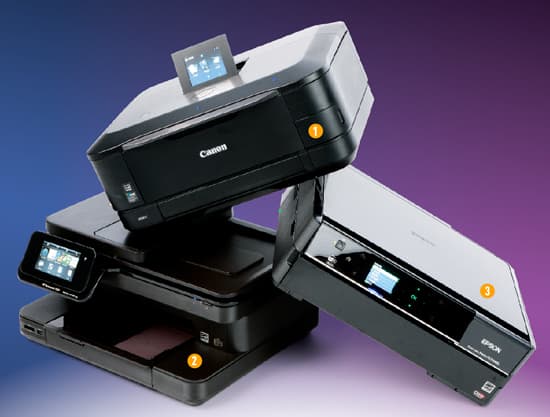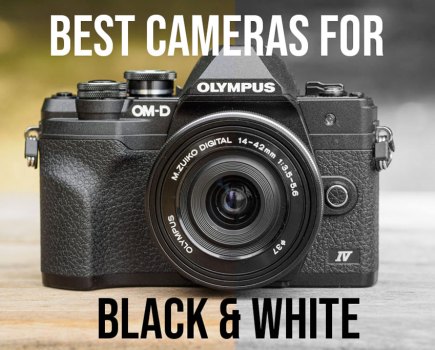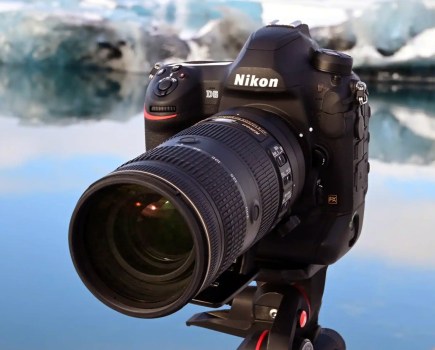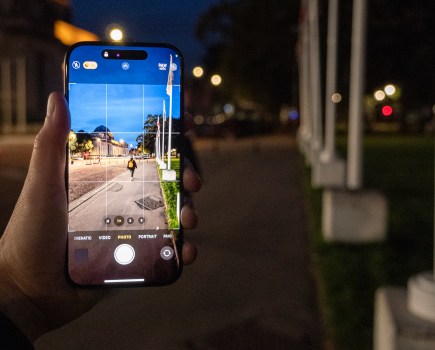On test
- 1 Canon PIXMA MG8250
- 2 HP Photosmart 7520
- 3 Epson Stylus Photo PX730WD
There is no shortage of photo-capable printers – in fact, you can pick up an entry-level Epson XP-30 for less than £40. However, having spent your cash on a decent camera and good lenses, you are probably going to want something that does justice to your equipment.
Most of today’s dedicated single-function photo printers are A3 or larger. However, large-format printers take up far too much desk space for the average hobbyist or home user and, anyway, the reality is that most of us do not need to produce large prints on a regular basis.
So, if you lack the space but still want to produce great-looking photos, look no further than a multifunction or all-in-one printer. These incorporate a flatbed scanner with sufficient resolution for most scanning and copying work, a memory-card reader, Wi-Fi and Ethernet, PictBridge, remote printing, CD/DVD label printing and perhaps a fax capability. These printers have become very popular due to their relative affordability, low running costs, versatility and high-quality photographic prints.
In this review we will be looking at photo-quality and photo-capable multifunction printers we consider worthy of your consideration. But first we should clarify the difference between ‘photo capable’ and ‘photo quality’. Photo-capable printers are usually supplied with the four colours of cyan, magenta, yellow and black, which are referred to as CMYK. Photo-capable printers are great for the day-to-day printing of a variety of document types, including text, greetings cards, graphics and photos.
Photo-quality printers generally have six or more inks, which include cyan, magenta, yellow, light cyan, light magenta and black. These are the printers that are going to reproduce the best-quality photos. Some of the more advanced single-function printers have eight or more inks, which may also include light black inks for cast-free black & white printing. However, regardless of which printer type you want to use, for the best-quality photos you need premium photo-quality paper.
The recommended retail price of multifunction printers can range from less than £50 up to £299. The higher-specified printers will cost more, but no doubt produce better-quality photographs. In this review we take a look at three printers, from Canon, Epson and HP, costing between £170 and £299.
Canon Pixma MG8250 £299
The PIXMA MG8250 is currently Canon’s
top-of-the-range multifunction printer. Features include print, copy
and scan with Wi-Fi, Ethernet, auto duplex, direct disc print, 35mm film
scanning, direct print from camera via PictBridge or memory card, an
8.8cm TFT screen with Intelligent Touch System and Pixma Cloud Link.

The
MG8250 has an impressive touch-sensitive surface. When you power the
printer up, a series of lights magically appears on the top surface,
with a central operations control panel to navigate through the flip-up
8.8cm TFT display. The display is very clear and easy to navigate. You
can, in fact, be scanning and printing without having to wade through
the on-screen manual.
The MG8250 uses individual ChromaLife 100
ink tanks, so you only need to replace the colour that has been
depleted. Although six inks are fitted, only three tanks – cyan, yellow
and magenta – contain colour. The other three are photo black, grey and
black (for text printing).
A rear media holder is used for
photo-quality papers and will support Canon special media up to 300gsm.
We printed our A4 test file using Canon Photo Paper Pro and Canon Matte
Photo Paper, which took 1min 57secs. The print has rendered all the
colours accurately, although they are bordering on oversaturated. The
cotton reels have a 3D feel and have kept all the detail in the thread,
especially on the white reel. The baby’s skin looks slightly hot, which
is probably due to too much magenta. The gradients display a very smooth
transition from white to solid colour, which will be due to the 1pl
(picolitre) drop size and Canon’s FINE print head technology. The colour
patches display clean colours, although the blue has turned to navy
blue, as has the blue cotton reel. The black & white image under
daylight viewing is totally cast free, but under artificial light (room
lighting) there is a magenta cast. This effect is due to metamerism,
whereby colours can change according to the ambient lighting conditions.
I wouldn’t have expected to see this so pronounced on a printer with a
dedicated grey ink.

 The colours of the Canon Pixma MG8250 are well rendered, althoughthey are a little too close to being oversaturated
The colours of the Canon Pixma MG8250 are well rendered, althoughthey are a little too close to being oversaturated
The
text on white is well controlled, but the white text on black is
starting to break up, which is noticeable on the base of ‘u’ and tops of
‘n’ & ‘m’ letters. Although you may not be printing white text on
black, it does indicate that the print head is not coping well with fine
detail.
The scanner can deal with photos, a 35mm film strip or four mounted slides at a maximum resolution of 4800dpi.
For
photo scans, there is very little user control at the scanning stage
other than setting the resolution and file type of PDF, JPEG or TIFF.
There is a limited editing facility within the Canon Navigator EX
application, which includes brightness, contrast, sharpness and so on,
and an advanced option for tone and colour correction. The scan quality
is first class and can be further tweaked in any image-editing
application. The film-scanning option was very good, but you would need
to apply Unsharp Mask to the scans to bring out the detail.
The
overall build quality and design of the MG8250 is excellent. While it is
not the smallest printer in this test, it is certainly the most well
made.
Facts & Figures
| RRP | £299 |
| Street price | Around £269 |
| Max print size | A4 |
| Resolution | 9600 x 2400dpi |
| Min droplet size | 1pl |
| Print head | Canon’s FINE print head |
| Ink system |
ChromaLife 100+ system with cyan, magenta, yellow, black, |
| Ink price | From £10.80 per tank (£31.99 for C,M&Y) |
| Interface | Ethernet, USB 2.0, Wi-Fi, Bluetooth |
| Dimensions | 470 x 396 x 199mm |
| Weight | Approximately 10.7kg |
Score: ★
★
★
★
★
HP Photosmart 7520 £170
The HP Photosmart 7520 is a new model for which we have the first review.
Setting
up this printer is simplicity itself. To make things easier, HP has
incorporated an animated tutorial on the printer’s large 10.9cm LCD
touchscreen. A set of installation inks is included for priming the
printer. The process takes about 5mins and then you are prompted to load
a sheet of plain paper for the automatic print head alignment. After
this you can install the printer and driver from the supplied CD or via
the internet.

The
A4 test print was made with HP Premium Plus Photo paper using the Best
setting, which took 2mins 32secs to complete. The HP 7520 may not be the
fastest printer in this test, but the colours are terrific. The print
displays vibrant colours throughout each element. The cotton reels
display good detail and saturation, although the brown reel lacks warmth
and the blue reel is a touch darker than the original. Looking at the
image of the baby, the skin colour is near-perfect and the colour and
contrast of the scenic photos closely match the original files. The
colour gradients have a smooth transition from white to solid colours,
although the solid colour swatches border on being oversaturated. This
is particularly the case with the green, while the blue patch is almost
midnight blue.
Switching our attention to the black & white
photo and gradients, we can see that it also displays a slight magenta
cast under artificial light, but is totally neutral under daylight
viewing. The shadow areas on this print are probably the best in our
group test, and detail has been maintained in both the shadow and
highlight areas of the image.
The 10.9cm LCD touchscreen is a joy
to use, and there are plenty of image-editing options when printing
direct from a memory card (SD) or from a USB memory stick, albeit many
of the options being very basic adjustments.

 The HP Photosmart 7520 produces colours that have a good level of saturation and images that contain a lot of detail
The HP Photosmart 7520 produces colours that have a good level of saturation and images that contain a lot of detail
There
are several options for scanning, such as scanning for email, to memory
card, USB stick or directly to your PC. The basic copy scanning
function did a good job scanning photos and directly printing to
photo-quality media. For times when you have to scan multiple pages or
photographs, the scanner also has an automatic document feeder. Other
features include fax and duplex printing. One interesting additional
feature is the ability to be able to connect the printer to the internet
and download additional templates and forms directly from the HP
website.
Overall, the HP Photosmart 7520 is a good all-round
printer and scanner, but it lacks a little of the finesse of the Canon
Pixma MG8250 (left) and the Epson Stylus Photo PX730WD
‘The HP Photosmart 7520 may not be the fastest printer in this test, but the colours are terrific’
Facts & figures
| RRP | £170 |
| Street price | From around £124 |
| Max print size | A4 |
| Resolution | 9600 x 2400dpi |
| Min droplet size | n/a |
| Print head | HP Thermal Inkjet |
| Ink system |
HP black, cyan, magenta, yellow, photo black |
| Ink price | From £8.99 per cartridge (£20.99 for Photo Value pack) |
| Interface | USB 2.0, Wi-Fi |
| Dimensions | 454 x 455 x 220mm |
| Weight | Approximately 8.61kg |
Score: ★
★
★
★
Epson Stylus Photo PX730WD £260 – Editor’s Choice
The
Epson Stylus Photo PX730WD is a compact all-in-one printer that
features automatic Wi-Fi set-up, which means the printer finds a
relevant connection and configures itself. There are also ethernet and
USB connections. The printer has a bright 6.3cm LCD screen, and although
this is not a touchscreen the navigation panel is very easy to use.
There are dual front-loading printing trays for 120 sheets of A4
standard paper, or 20 sheets of photo media (up to 255gsm), and a
smaller tray for 6x4in photo media. As the media has to go through a
U-bend before being printed, this may restrict the use of heavier weight
media and unfortunately there is no rear feed facility.

The
printer also has a CD/DVD printing tray for printing labels directly
onto inkjet printable discs. This is a motorised tray that pops out when
the CD label printing option is activated via the Epson Print CD
application. Also featured is built-in duplex printing, which is handy
for printing newsletters or large text documents, but of little use for
photographs. For photo printing, the printer has a built-in memory card
reader that supports all the popular card types, along with PictBridge
for use with PictBridge-compatible cameras. Photographs on memory cards
can be marked for printing via the LCD screen.
Other features
include Epson Connect, which provides the facility to print wirelessly
from smartphones and tablets from within the home, or print by emailing
documents directly to the printer’s unique email address. A remote
printer driver offers the flexibility to print from a PC to an Epson
Connect printer anywhere in the world, plus direct printing from
iDevices through Epson’s iPrint app.
The printer uses Epson’s six
Claria Photo inks, which come in standard (7.4ml) and large-capacity
cartridges (11ml). The Epson PX730WD is the only one in this test that
uses six inks in the form of cyan, magenta, black, yellow, light magenta
and light cyan.
The colour quality of our test print is
excellent, and is as we would expect from a six-colour printer. The
cotton reels display good detail in both the white and black reels,
while the dark blue reel is accurate to the original. The portrait has a
slight magenta tint, but otherwise detail is good. The colour gradients
are the smoothest in this test, mainly due to the 1.5pl droplet size
and light inks. The black & white image is cast-free, even under
artificial lighting. The text and line illustrations have clean lines
with no bleeding, even with white letters on black.

 The Epson Stylus Photo PX730WD has the smallest colour gradient of the printers on test here
The Epson Stylus Photo PX730WD has the smallest colour gradient of the printers on test here
The
built-in flatbed scanner has a resolution of 2400 x 4800dpi which is
perhaps over the top for document and photo scanning. I would expect
this resolution on a film scanner, so it’s a pity there isn’t a
film-scanning facility on this unit. The scanner lid is hinged and flush
to the top surface, which can make it difficult to scan thicker books,
so I would have expected some way to raise the lid height.
This
unit uses the same scanning software that is found on Epson’s dedicated
flatbed scanners and the modes include full auto, home, office and
professional. These modes cater for every level of user, and the
professional mode gives the greatest control on scan settings for
photographs. The quality of our scanned test photo is first class, with
good tonal rendition throughout the scan and plenty of detail.
Facts & Figures
| RRP | £259.99 |
| Street price | From around £124 |
| Max print size | A4 |
| Resolution | 5760 x 1440dpi |
| Min droplet size | 1.5pl |
| Print head | Canon’s Fine print head with 12,288 nozzles |
| Ink system |
Epson Claria black, cyan, light cyan, yellow, |
| Ink price | £10.44 or £58.52 for a complete set |
| Interface | Ethernet, USB 2.0, Wi-Fi |
| Dimensions | 445 x 458 x 150mm |
| Weight | Approximately 9.8kg |
Score: ★
★
★
★
★
Editor’s Choice
COMING SOON FROM EPSON
Epson
has just launched the Expression Photo XP-750, a compact all-in-one
printer approximately 40% smaller than its predecessor, the Epson Stylus
Photo PX730WD on test here. The XP-750 features a bright 8.8cm LCD
touchscreen, motorised output tray that opens automatically when
printing, dual front-loading printing trays for 100 sheets of A4
standard paper or 20 sheets of photo media up to 255gsm, and a smaller
tray for 6x4in photo media. At the back of the printer is a single-sheet
rear feed for heavier photo paper.
The XP-750 also has a CD/DVD
printing tray for printing labels directly onto inkjet printable discs.
This is a removable tray that has to be manually inserted and aligned
with arrows, while on previous models this was a motorised tray. The new
printer also features built-in duplex printing, which is useful for
printing newsletters or large text documents. The flatbed scanner has a
resolution of 2400x4800dpi, which is probably over the top for document
and photo scanning, and sadly there isn’t a film-scanning facility on
this unit.

Other
features include Epson Connect, which provides the facility to print
wirelessly from smartphones and tablets from within the home or print by
emailing documents directly to the printer’s unique email address. A
remote printer driver offers the flexibility to print from a PC to an
Epson Connect printer anywhere in the world. The Scan-to-Cloud feature
enables scanned documents and photos to be stored directly in Cloud
services. The XP-750 has Apple AirPrint, and iPrint for home printing
via an Epson app, and email print and Google Cloud print for mobile use.
For photo printing, the printer has a built-in memory card reader that
supports all the popular card types, plus PictBridge for use with
PictBridge-compatible cameras.
The XP-750 was not available for
our review as it has only just been announced, but we visited Epson HQ
to do an on-site test with a pre-production model. We particularly like
the large 8.8cm touchscreen LCD and the clear interactive menus that can
be easily navigated with your fingers. The printer uses Epson’s six
colour Claria Photo HD inks, which are available in Standard and XL
capacities, the large-capacity cartridge containing about one-third more
ink. The inks and the Epson Micro Piezo print head are identical to
those found in the PX730WD. We will publish a full review on the XP-750
when the printer is available.
Although a market-ready XP-750 was
not available for this test, the pre-production version we saw had a
large 8.8cm touchscreen and easily navigable menus
Conclusion
Most
users would be more than happy with the photos produced by all three
printers, although dedicated photographers may demand higher quality.
The Epson Stylus Photo PX730WD was the only unit to use six photo inks,
with the other two printers using three colours plus black(s). This
brings me back to my opening statement about photo-capable and
photo-quality printers. For the best photographic quality you really do
need a printer with six inks, as these will provide more subtlety of
colour and smoother gradients.

All
the printers are heavily promoting Wi-Fi, email, AirPrint and cloud
printing. While these are great features, especially for family use and
for using a mobile phone to capture photos, I can’t help wondering if
this is really useful for a photographer who simply wants high-quality
photo prints. All the printers come with software applications or
download ability to create calendars and greeting cards. There is no
denying the convenience of an all-in-one multifunction unit, but perhaps
these units are better suited to the small office or home office market
or as a workhorse for everyday printing. Photographers may have to
accept that an A3 single-function printer will be the better choice.







